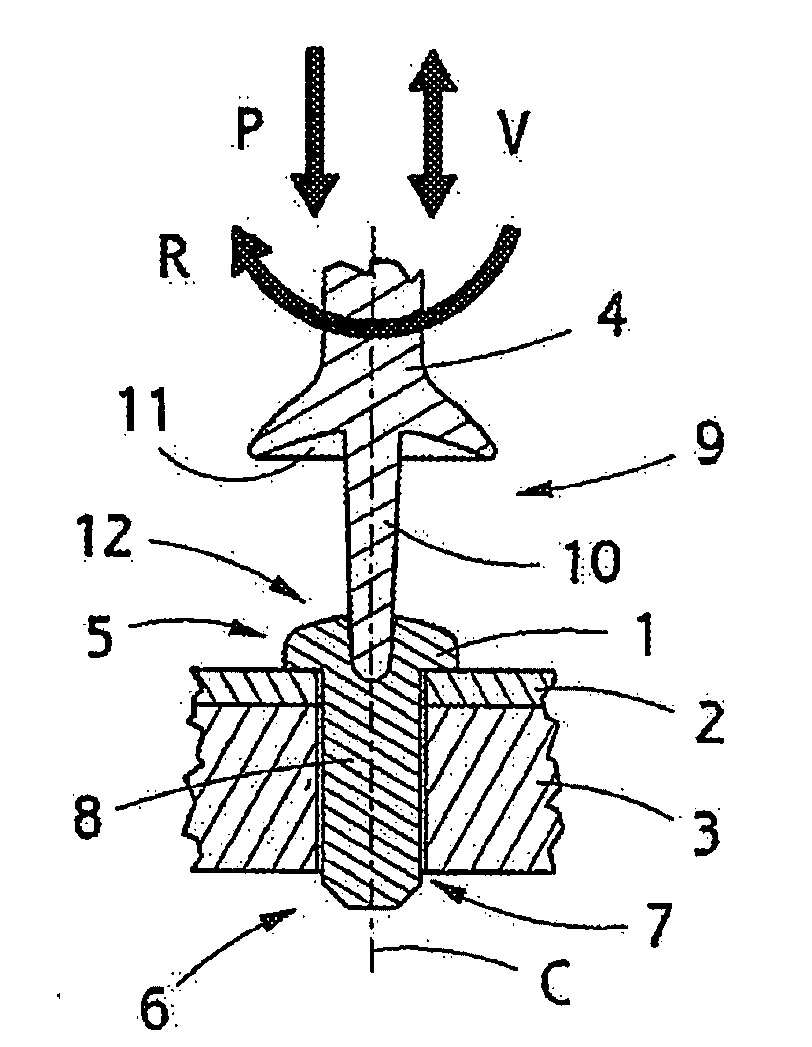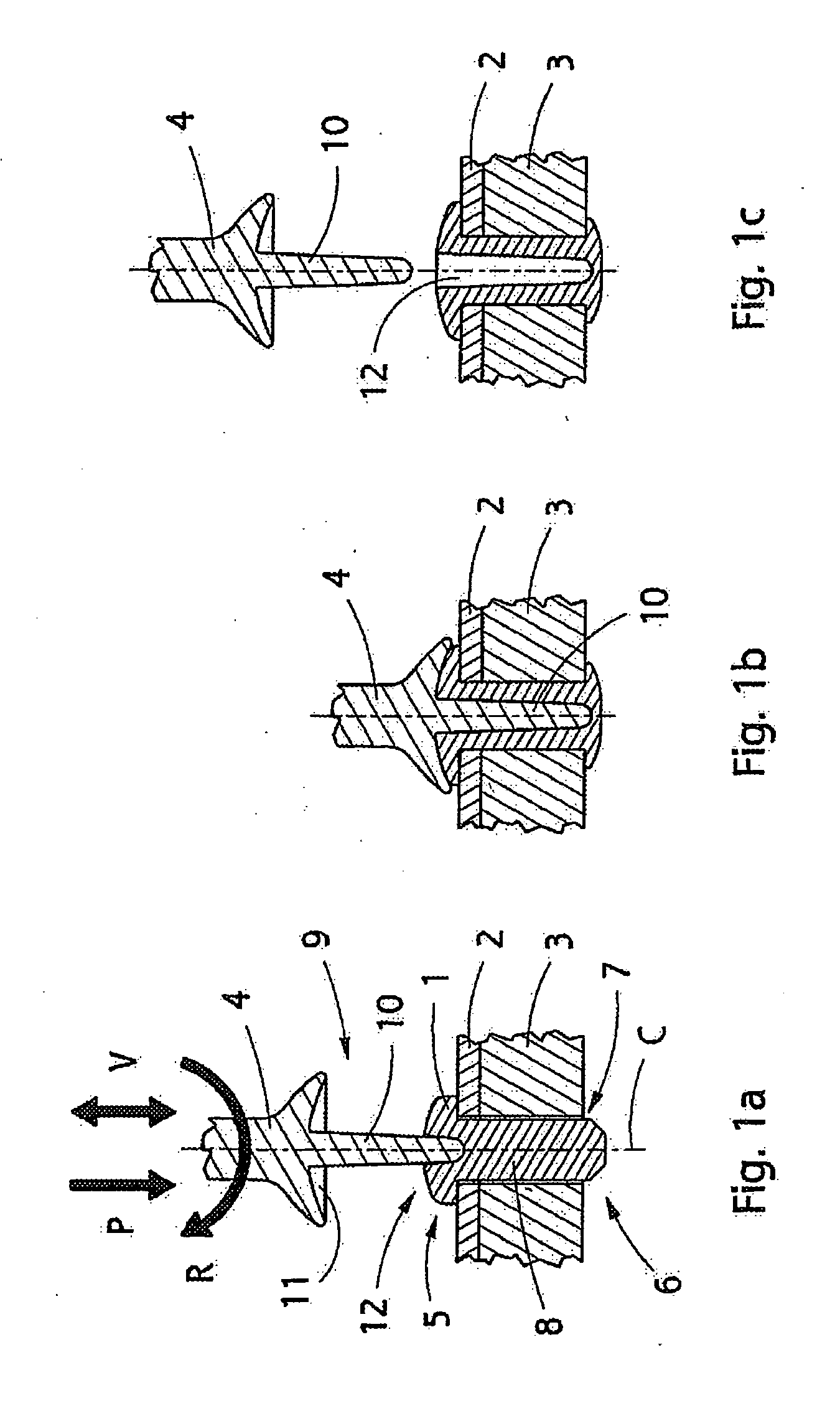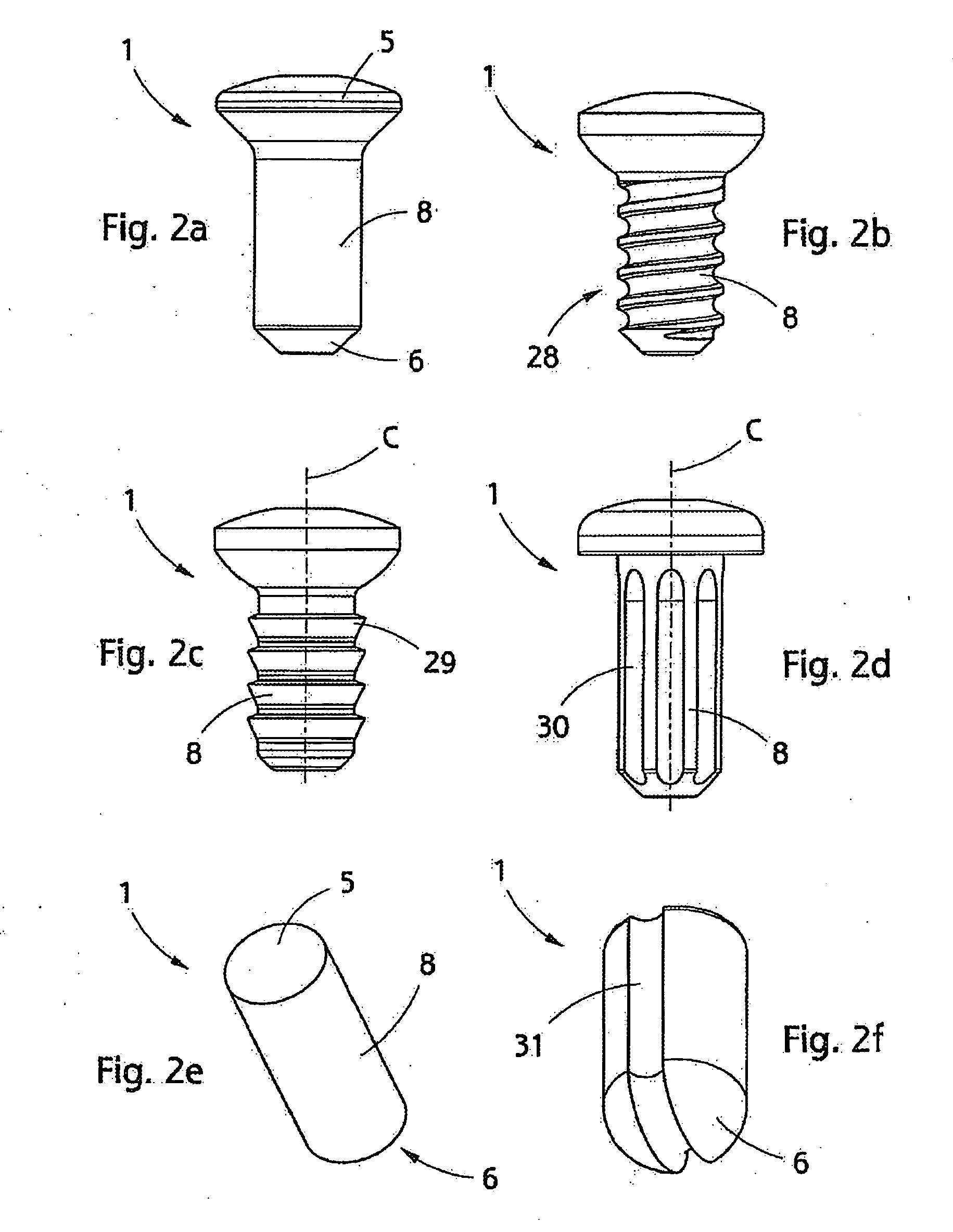Implant, implantation tool, kit and method
a technology of implantation tools and implants, applied in the field of implants, can solve the problems of insufficient pull-out strength, slow fastening, and high temperature of the tissue around the fastening means, and achieve the effects of avoiding tissue damage caused by high temperature, fastening very quickly, and firm pull-out strength
- Summary
- Abstract
- Description
- Claims
- Application Information
AI Technical Summary
Benefits of technology
Problems solved by technology
Method used
Image
Examples
example 1
[0084]An implant according to FIG. 2e made of an oriented polymer with a draw ratio 4 was heated at a steady temperature in an oven for different times and dimensional changes were examined as a function of time. The outer diameter of the implant was approximately 4 mm.
[0085]It was found that a significant radial swelling took from dozens of seconds to few minutes, which was too much for practical applications. It was also found that the swelling took place at physiologically too high a temperature (70 to 90° C.).
[0086]It was also detected that the heat-induced swelling of the implant arranged in a loose mounting hole in the bony tissue stops at the wall of a bore channel. The pull-out strength achieved with the implant was marginal, below 50 N, and the produced surface pressure against the bone was approximately 1 MPa.
[0087]In addition, both oriented and non-oriented implants were mounted by inserting the implant into a tightly-dimensioned mounting hole provided in the bone and hea...
example 2
[0088]An implant of FIG. 3f made of an oriented material was arranged in a tightly-dimensioned mounting hole provided in the bone. The implant was forced to expand sideward towards the bone by inserting a hot pin 10 wider than the diameter of the hole 12 into the hole 12 of the implant. The implant expanded in few seconds, which was, in terms of clinical use, very quickly. As a result of the heating, a temperature gradient was formed at the implant, i.e. the shank thereof, whereby the temperature of the inner section of the implant, i.e. the shank part closely surrounding the hole 12, was 100 to 150° C., whereas the temperature of the outer surface against the tissue remained below 48° C. In other words, the temperature of the inner section of the implant was above the Tg temperature and / or orientation temperature of the manufacturing material of the implant and the temperature of the outer surface was below the Tg temperature so that temperature-induced cell damages could be avoide...
example 3
[0091]A non-oriented implant of FIG. 3f was arranged in a bone in the manner described in Example 2. By mechanically shaping or forcing the implant, such an implant also provided completely sufficient pull-out strength values in pull-out tests.
[0092]Depending on the application, non-oriented material may also be considered to be used, but it is advantageous to minimize the amount of foreign matter in the body and to use an oriented, stronger polymer whenever there is no other obstacle to use it.
PUM
 Login to View More
Login to View More Abstract
Description
Claims
Application Information
 Login to View More
Login to View More - R&D
- Intellectual Property
- Life Sciences
- Materials
- Tech Scout
- Unparalleled Data Quality
- Higher Quality Content
- 60% Fewer Hallucinations
Browse by: Latest US Patents, China's latest patents, Technical Efficacy Thesaurus, Application Domain, Technology Topic, Popular Technical Reports.
© 2025 PatSnap. All rights reserved.Legal|Privacy policy|Modern Slavery Act Transparency Statement|Sitemap|About US| Contact US: help@patsnap.com



